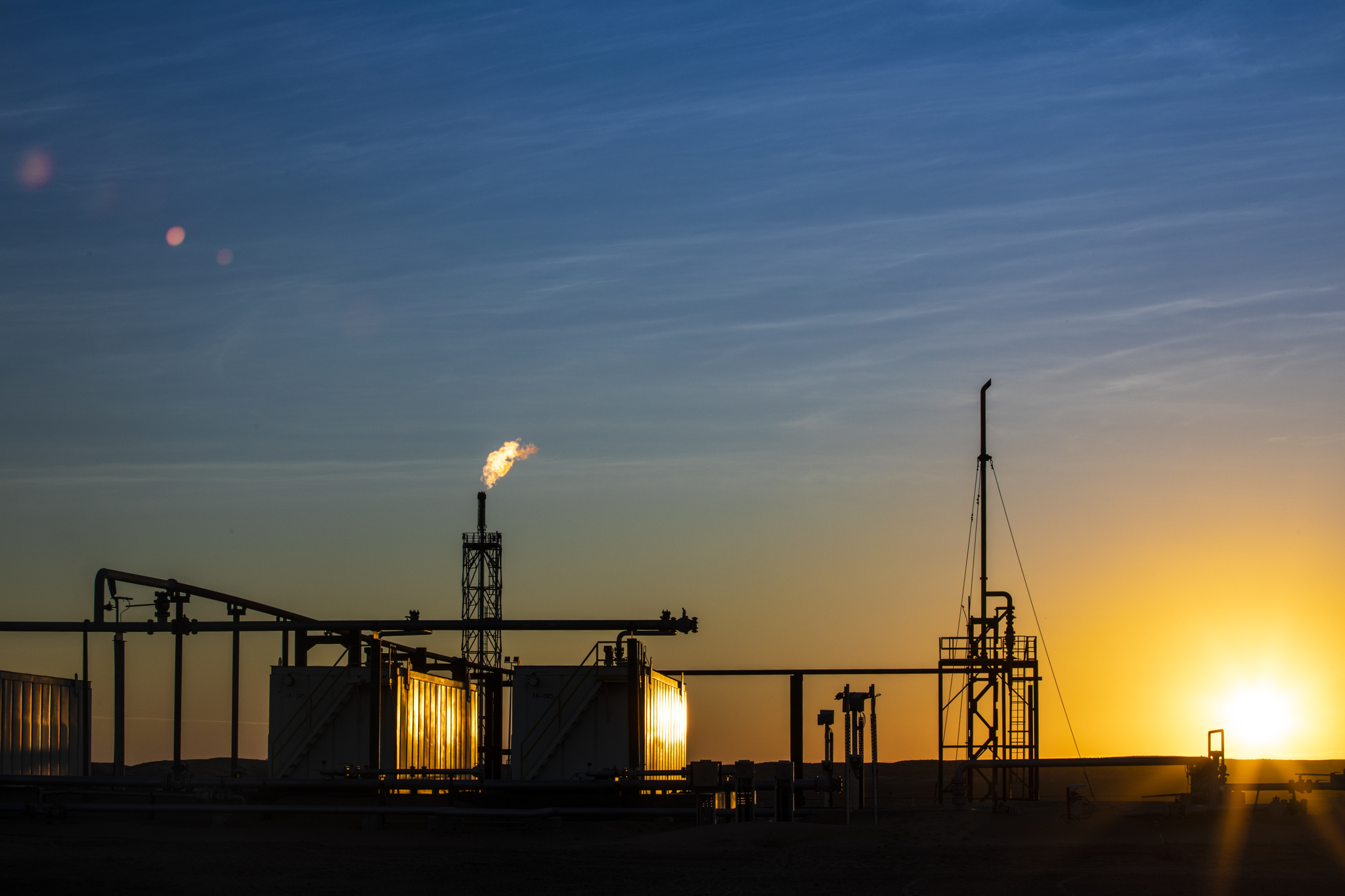


Walter Simpson[/caption]
Away from the limelight dominated by the likes of Block 6 of Petroleum Development Oman, Block 61 of BP, or Block 53 of Oxy Mukhaizna, is a pair of adjoining licenses that exemplify the important contribution of relatively small players to the continuing success of Oman’s upstream sector.
Blocks 3&4, covering a total area of around 29,100 sq km in eastern central Oman, together represent one of the largest concessions in the Sultanate. They have held their own in the boom and bust of the past decade, sustaining and even building on crude production in a demonstration of their commitment to supporting the nation’s upstream energy objectives.
A decade on, the partnership of CC Energy Development (Oman) as operator with a 50 per cent equity stake, Tethys Oil (30 per cent) and Mitsui E&P Middle East (20 per cent), is poised to step up its game in unlocking the hydrocarbon potential of the two blocks.
Walter Simpson, Managing Director – CC Energy Development, was upbeat about the Blocks’ performance and the outlook for growth. “We achieved record production levels in 2019, exporting above 45,000 bpd. Our compound annual growth in production over the last two years has been about 8 per cent, which I’m pleased with.”
Simpson further added: “What has really made this performance extra special is that we have seen our safety record at the same time to be absolutely in line with the best in the industry. So we have had an improvement in our business performance and our production, and a significant enhancement in our safety.”
Contributing to the uptick in the Blocks’ performance is an array of factors, most notably the start-up of CCED’s new facility at Ulfa in Block 3 early in 2019. “This facility, which processes output from the Ulfa and Sahma fields, has played a key role in the optimisation of the existing and new fields and while also helping us grow our production to the record levels we have seen at present,” the Managing Director said. “We have also been working very hard on developing the capabilities of our technical teams, and introducing new processes and procedures to optimise our fields and bring on stream new discoveries as quickly and effectively as possible.”
For 2020, the operator has its sights on a check-list of performance targets, not least the ramp-up of crude production to 50,000 bpd. To this end, CCED and its partners are investing upwards of $300 million annually in the drilling of a mix of exploration, appraisal and production wells aimed at sustaining and growing output.
“We have three rigs drilling continuously – that’s about $80 million invested in wells this year – as well as a workover hoist and a number of intervention units in the fields. We are looking to drill in the order of 30 – 40 wells this year, so we are making a strong commitment along with our partners to sustain production from our fields and grow it,” Simpson noted.
But the highpoint of 2020 – and indeed perhaps of the past decade – is the much-anticipated production of the 100 millionth barrel of crude which CCED is on track to delivering later this year. The milestone, Simpson observes, is of immense pride for CCED particularly as it coincides with the 50th anniversary of Oman’s modern renaissance.
Further, with an eye on the long-term, CCED is also looking to ramp up investment in exploration activity. The goal is to, among other things, grow its hydrocarbon resource base to help support operations over the duration of its license which is valid for at least another 20 years.
The Managing Director explained: “As a company we want to be sustainable in our operations in Oman. Our license runs until 2040 and we want to be working and being effective in Oman till then. So we need new oil, and we have been expanding our exploration programme. We agreed with the Ministry and our partners Tethys Oil and Mitsui last year to greatly expand our seismic acquisition. Our plan over the next 3 – 5 years is to acquire about 10,000 sq kms of 3D seismic covering the entire western portion of the Blocks 3&4. That’s a huge campaign that began last year.”
Another important highlight of the past year has been CCED’s efforts to monetise the modest quantities of associated gas that it produces as part of its operations. Gas output is currently low and hence does not merit investment in pipeline capacity to take it to market. But following talks with the Ministry, the company has come up with ways to utilise some of these volumes, and thereby burnish its environmental credentials as well.
“So, instead of flaring the gas, we decided to set up a small-scale gas-to-power project in one of our fields to generate electricity for our camps, the electric submersible pumps of some of our wells, and other facilities. This initiative is making quite a significant environmental contribution, as well as a financial impact because it’s reducing our consumption of diesel for power generation. Going forward, we want to increase our use of gas for power generation and thereby reduce our environmental footprint. As a low-cost operator, we also strive to become a valued member of the community we are working in.”
Eager to bolster its reputation as a tech-savvy operator, CCED is also weighing innovative technology to optimise productivity and enhance operations. This is exemplified in its deployment of drone technology to undertake plant inspection without having to, for example, invest in high scaffoldings or shut down plants if the inspections were to be done conventionally.
“We are also looking at digitalisation and other technology to enable remote access to data wells, innovative ways of using Machine Learning and Artificial Intelligence in the processing of seismic, and other techniques of working more innovatively and efficiently.”
Oman Observer is now on the WhatsApp channel. Click here



